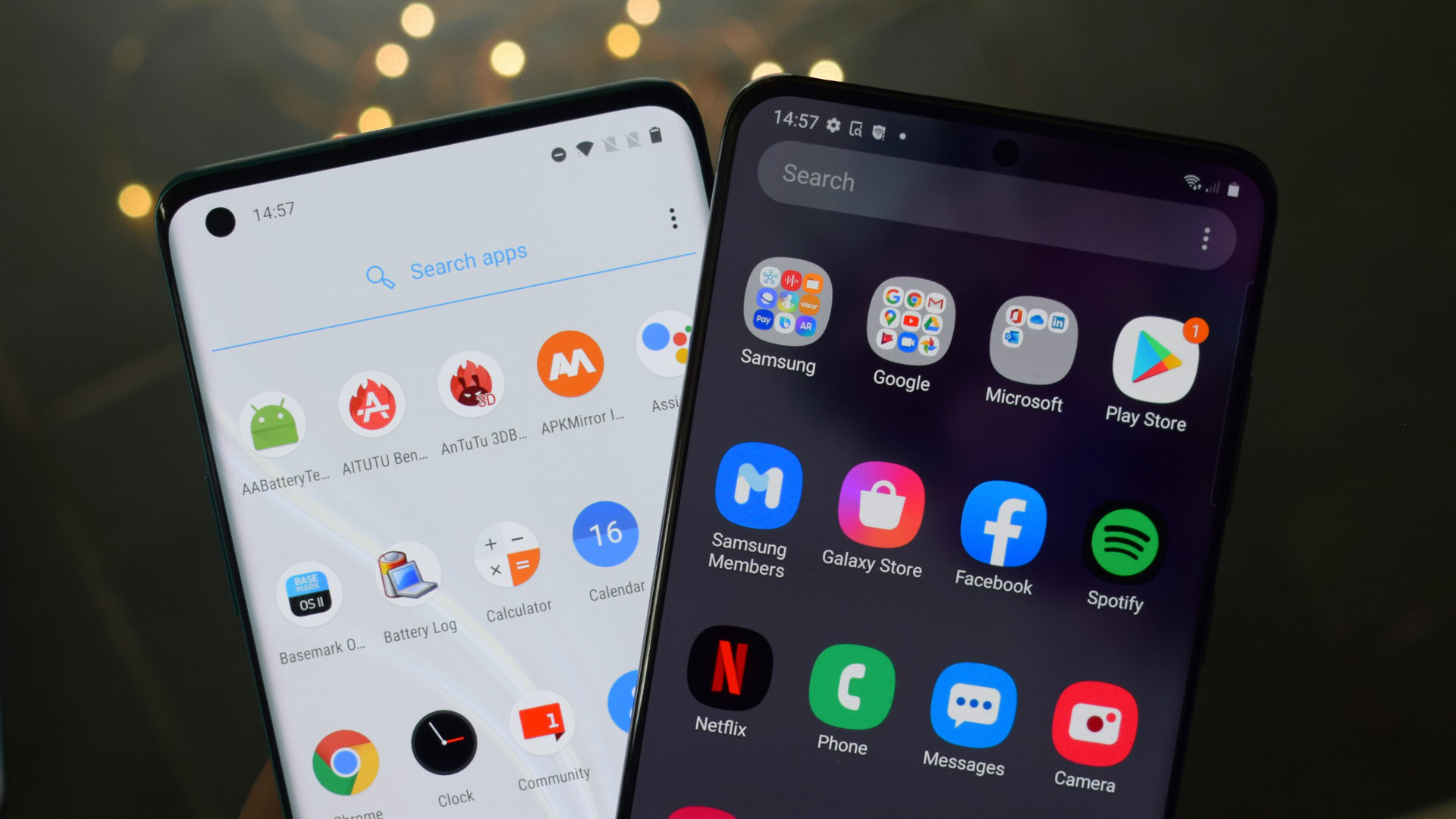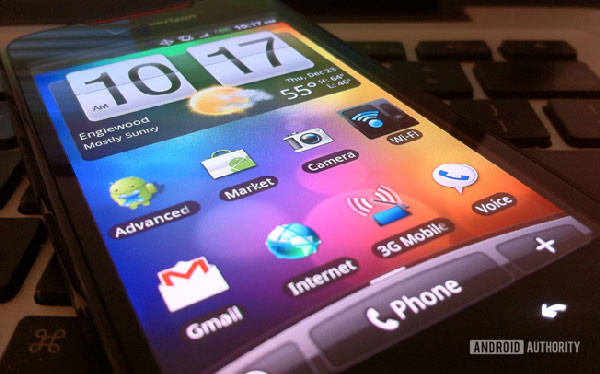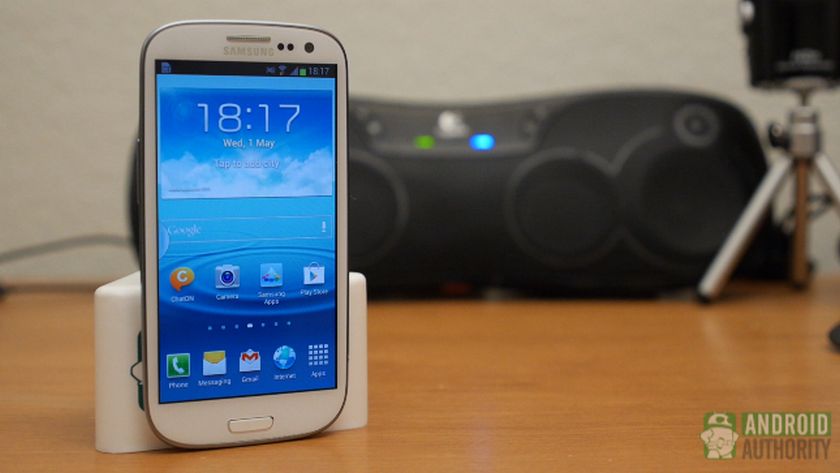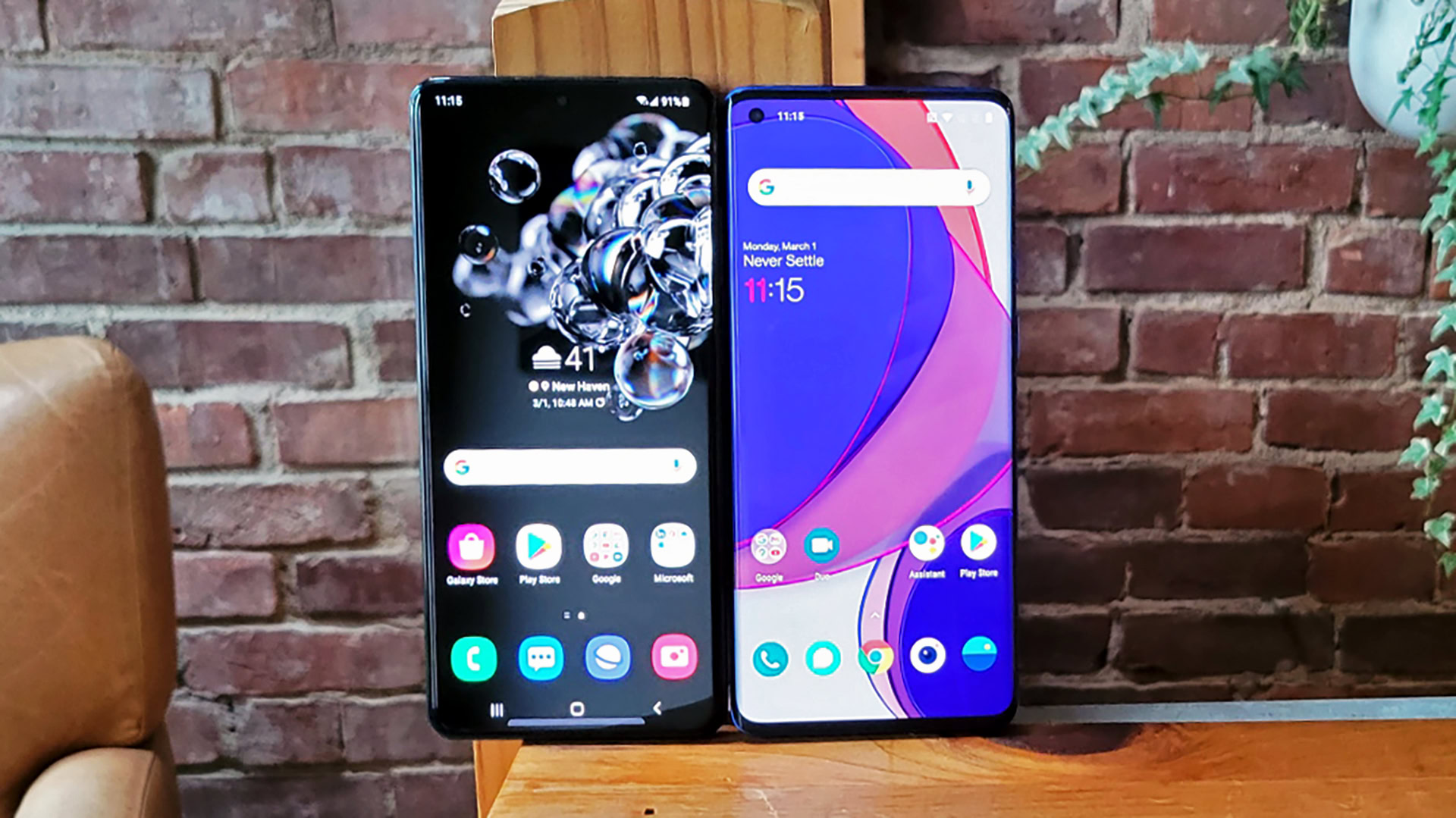Affiliate links on Android Authority may earn us a commission. Learn more.
Give me a great software skin over stock Android any day
Published onJune 20, 2021

Two of Android’s biggest strengths are choice and customization. While Apple started to catch up by adding widgets in iOS 14, Android phones consistently introduce innovative features that empower users to customize their software experience, especially with the new Android 12 Material You design language. However, it’s not usually stock Android or Pixel phones that make the biggest leaps.
In my view, custom Android skins have often been at the forefront of innovation. This, combined with the sleek visual design of modern skins like Samsung’s One UI, is why I prefer Android skins to the “pure” stock Android experience.
Explained: What is stock Android?
The history of Android skins vs stock Android

HTC was without a doubt one of the early Android UI pioneers. Who can forget that rainbow-colored wallpaper and weather clock widget? I may be biased because my first smartphone was the HTCDesire HD, but to me, it was iconic.
Sense may have been over-the-top in many regards, but that’s why I loved it. The smooth animation of clouds dissipating when unlocking the phone, the intuitiveness of its default browser, and the huge variety of customization options made for a fantastic user experience. Next to it, the stock Nexus S seemed plain and boring, even with its live wallpapers. The slightly better performance did not seem like a worthy trade-off to me.
Related: Remembering the first Android phone
Yet, I never would have stuck with the HTCskin for so long if it didn’t offer some great features along with the bling. For example, flipping over a ringing phone to silence has been a staple of the Taiwanese manufacturer since 2010. Stock Android, on the other hand, finally included the option in Android 9 Pie.
HTC also beat Google to the punch with the “Find my phone” feature, which was available through the Sense website years before the stock OS finally caught up.

However, not all skins were made equal in the early days of Android. Samsung’s TouchWiz was notorious for being a bloated mess. The skin came with many preinstalled apps and features no one asked for (or ever used). Bugs and crashes were commonplace too.
At the time, TouchWiz was the number one reason I stayed away from Samsung phones even when their hardware and camera capabilities seemed tempting. However, Samsung didn’t have a monopoly on over-featured skins. As time progressed, other manufacturers bogged down their phones with too many unnecessary extras, HTCincluded.
See also: The history of Android OS: its name, origin, and more
This inevitably led to a demand for cleaner, lighter versions of “pure Android” and Google Play Edition phones. They offered a more streamlined UI, free of dozens of manufacturer apps. Although, it took the introduction of Lollipop’s material design for stock Android to realize its true potential.
Minimalist but stylish, Lollipop reinvigorated and elevated the OS. You didn’t have to sacrifice looks to enjoy quick and consistent updates anymore. Unfortunately, the redesign momentum did not last long. In my opinion, 2020 stock Android is far less appealing than modern Android skins.
Why Android skins today are better than stock

Stock Android still offers a cleaner experience than some Android skins today, but plenty of manufacturers have caught up with the times. OnePlus with OxygenOS and Samsung with One UI are two of the standouts.
OxygenOS has long been considered one of the best Android skins, and for a good reason. It is snappy, responsive, and almost as simple as its stock counterpart. Yet, it sports features like a gaming mode, built-in screen recording, and much more. Of course, simplicity and convenience are not the domain of stock Android alone. However, the shine has begun to fade on OxygenOS in recent years.
Don’t miss: The best phones running stock Android
In my opinion, Samsung’s One UI strikes the perfect balance between simplicity and style, making it my Android skin of choice. Its charming flat icons, clean menus optimized for one-handed use, and its stunning system-wide AMOLED dark mode are just some of the reasons why I can’t get enough of it. But, just like HTCSense back in the day, it’s the substance, not the style, that keeps me coming back for more.
One UI has plenty of features that I enjoy that can’t be found on its stock counterpart. These include scrolling screenshots, a built-in screen recorder, and Bixby Routines. This may sound crazy to those that haven’t tried Bixby since its early days (when it was pretty awful), but Bixby has quietly become one of the best features of One UI.
Bixby Routines works on the IFTTT principle without voice commands. I save battery every night by automatically turning off the always-on display, Bluetooth, NFC, and other functions. It is one of the most convenient features on any phone I’ve recently owned.
But what about those additional apps that stock purists will say you don’t need? Some manufacturer apps like Samsung Health are far from impressive even today, but I like having the choice between Google and OEM apps. Samsung Notes, for example, is so simple and easy to use that I prefer it to everything else.
Samsung’s skin isn’t perfect by any means, however. It still comes with some unnecessary pre-installed apps, but it’s light years ahead of its TouchWiz predecessor.
UI ads are the only thing that can make me switch to stock Android.
Better yet, I don’t have to sacrifice update speed for any of the extra features I love. In fact, Samsung has beaten Google to the security update punch multiple times since 2019. So to me, this makes One UI the clear winner if I have to pick between it and stock Android.
Is there anything that would make me switch back to the stock OS? UI ads would definitely force me to make the jump, but at the moment, it’s hard to see the appeal of stock Android. Material design was great when it made its debut, but it’s time for a refresh. It’s quite telling that even Google’s own phones don’t run traditional stock Android these days. Instead, you get a Pixel-ified version with unique tweaks and design elements.
Up until Android 12, pure Android looked fairly dated compared to most Android skins. It was missing plenty of necessary and convenient features, too. Now that Android 12 and Material You are here, maybe it will be enough to change my mind. Until then, I’ll be sticking with Android skins.